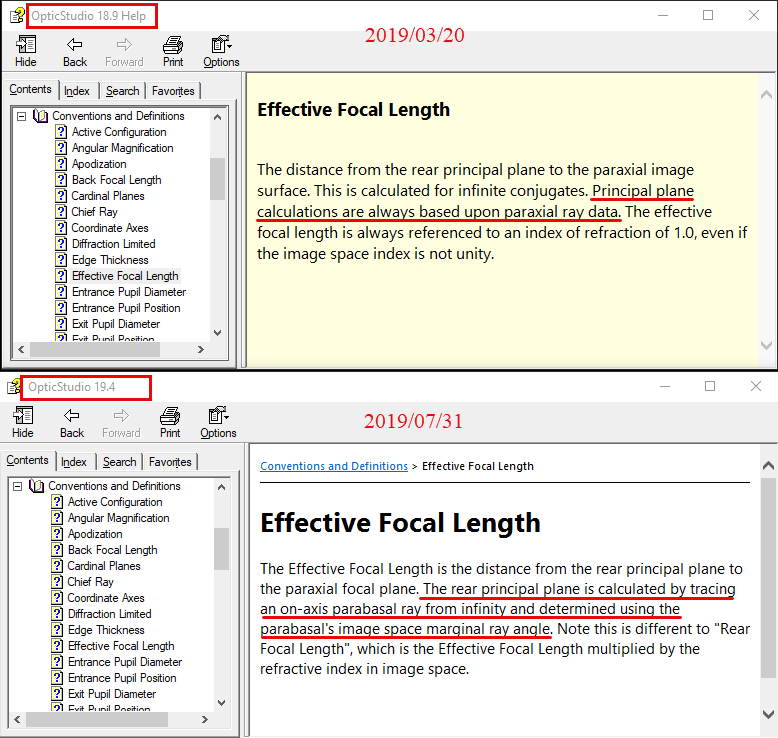Hello,
so far I was under the impression that the EFLY/EFLX operands ignore all Zernike coefficients (e.g. of Biconic Zernike surface) and purely consider the radii of curvature . Now I discovered that the coefficient “Zernike 4” and its effect on the curvature is considered for EFL calculation. Although the Zernike 4 polynomial is proportional to r² and thus directly changes the effective radius of curvature, it is by far the not the only Zernike polynomial effecting the EFL in X- and Y-direction (e.g. Zernikes 5, 6, 11, 12, 13, ...).
Is this change in EFL calculation a bug or intented?
What was the OpticStudio release this change in ELFY/EFLX was introduced with? I could not find any mentions in the release notes.
Best regards,
Simon




